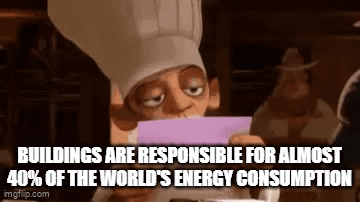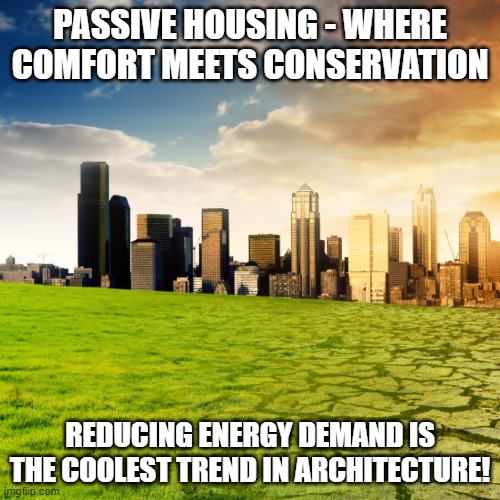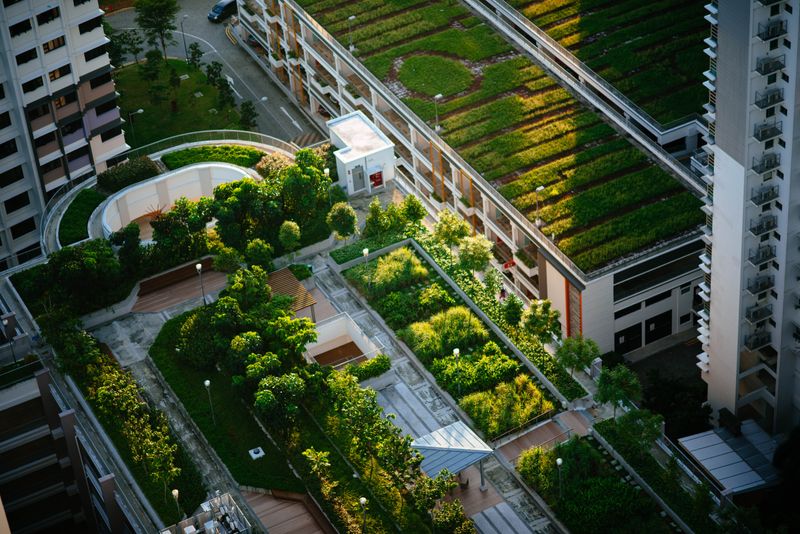Did you know that residential, industrial, and commercial buildings are responsible for almost 40% of the world's energy consumption according to the United Nations Environment Program?

But there are solutions to make buildings more comfortable and much less impactful on climate change!
Passive Housing
Passive housing is a sustainable architectural concept that focuses on minimizing energy consumption by optimizing insulation, ventilation, and temperature.
Passive housing can cut energy consumption by up to 90%, providing not just eco-friendly homes but also substantial long-term cost savings.

Building Adaptations
Adapting to climate change means making changes in our communities to deal with the effects of climate change, like droughts, heat waves, and floods.
Adapting buildings to climate change involves making changes inside, on, and around the structures to better cope with the impacts of climate change:
Green roofs can help reduce heat in urban environments by providing shade and coolness.
White pavements and roads can help reduce the heat in cities and on roads.
Trees and natural spaces can help reduce flooding in cities.

Sustainable Urban Planning
 Photo by Samson on Unsplash
Photo by Samson on UnsplashUrban areas are major contributors to climate change due to increased energy consumption and transportation — but can also be the key area that leads to the climate change revolution.
Mitigation of greenhouse gas (GHG) emissions can be achieved through sustainable urban planning. Integrating climate change adaptation as a core element in the urban planning of Canadian cities is one solution. Here are some examples:
The Vancouver Convention Center has a green roof that makes it the most green convention center in the world.
The city of Montréal has mandated a zero-emission standard for all new construction over 2000 square meters beginning in 2025 to promote energy-efficient construction and sustainable materials.
Quiz
What percentage of the Canadian population lives in a city?
Education and Awareness
The building sector is the third-largest source of greenhouse gas (GHG) emissions, accounting for 13% of Canada’s total. When considering the emissions from electricity generation for buildings, this figure rises to 18% with additional emissions embedded in building materials and construction supply chains.
Empowering people through education, engaging communities with awareness, and aligning with government incentives — Canada's climate revolution begins with a united commitment to sustainable construction practices!

Organizations and companies are taking strides in sustainable construction practices to combat climate change in Canada. Here are some notable examples:
Canada Green Building Council (CaGBC): Leading the charge in green building practices, CaGBC offers programs and certifications to promote environmentally responsible construction.
EllisDon: As one of Canada's major construction companies, EllisDon actively incorporates green building technologies in its projects.
Take Action
Your feedback matters to us.
This Byte helped me better understand the topic.


